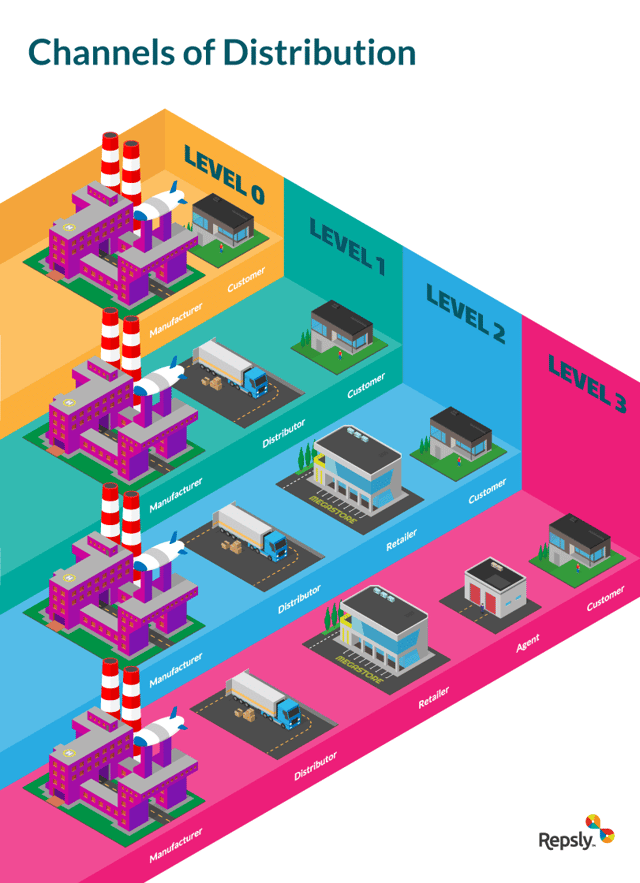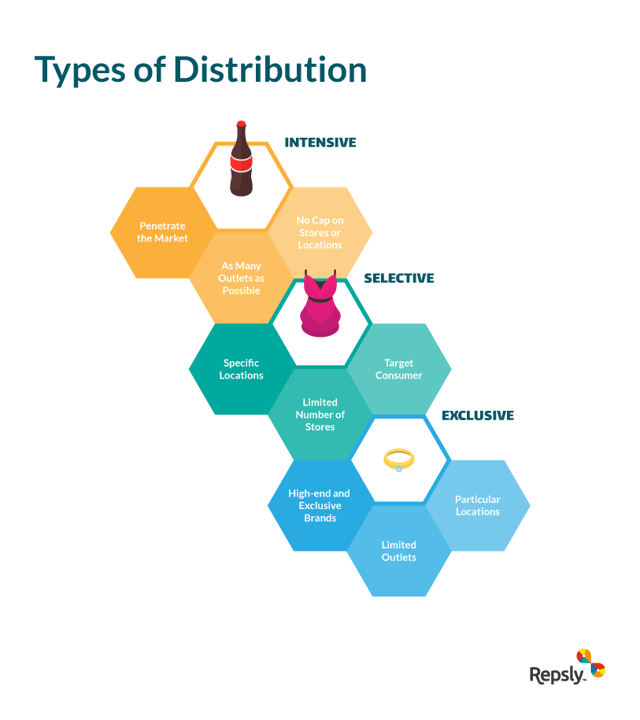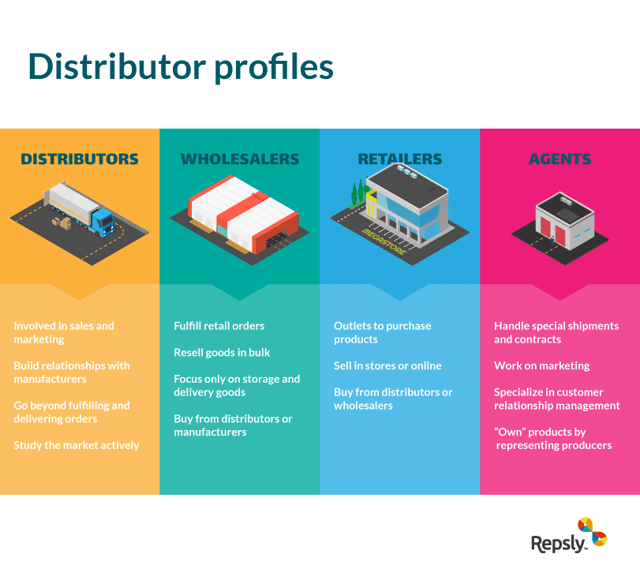Aztec Clay Distributor Is a Family Owned Business That Is Owned by Alice
When expanding into new markets, the best brands know that staying on top of their entire sales procedure is critical to sealing the deal. But how tin you stay on top of your sales process if y'all aren't engaged in it each footstep of the way? Product distribution is 1 of import step that often goes overlooked as brands opt for the cheapest or easiest pick rather than devising a legitimate distribution strategy. In this post, nosotros will tell y'all everything you need to know about production distribution, from different distribution strategies to who is who in the industry, so you can refine your own distribution strategy to achieve elevation operation on the shelf. ii. Distribution's Favorite Channels 3. The Iii Types Of Distribution 4. Who's Who? Let's go technical. Distribution entails making a production available for purchase by dispersing it through the market. Information technology involves transportation, packaging, and delivery. Distribution is fundamental to a company's sales. A distributor is defined equally someone who purchases products, stores them, and then sells them through a distribution channel. They are in betwixt manufacturers and retailers or consumers, working on behalf of a particular company equally opposed to representing themselves. Usually, distributors partake in collaborative relationships with clients and manufacturers. The right distributor enhances a company'south exposure in the product market and tin can requite an edge in terms of speed and efficiency. A distribution channel refers to the catamenia of business that occurs between a manufacturer and a consumer. It is the path that a transaction follows. Distributors are the intermediaries that deliver and business firm products for producers to sell to retailers. These channels can be relatively simple or increasingly circuitous. There are straight and indirect channels. In a direct channel, the producer works directly with the consumer. An indirect channel, on the other paw, incorporates intermediaries into the sales flow. In that location are four levels that intermission down the period betwixt manufacturers and consumers. When looking to expand into new markets or switch upwards your distribution strategy, you demand to know the unlike levels of distribution. Level Nothing: A level zippo distribution channel is the simplest. It involves a directly auction from manufacturers to consumers with no intermediary. Level Ane: A level one channel has one intermediary as the middleman betwixt the producer and consumer. An case is a retailer between manufacturer and consumer. Level Two: When thinking most levels, associate the number to the number of intermediaries. In this instance, a level two channel involves two intermediaries between producer and consumer. An example here would be a wholesaler selling to a retailer who then sells to the consumer. Level Three: Here'south where an agent or broker comes in. Agents piece of work on behalf of companies and deal primarily with wholesalers. From here, the wholesalers sell to retailers who then sell to consumers. Distribution strategies depend on the blazon of product being sold. the trick is knowing what type of distribution yous volition need to achieve your growth goals . In that location are three methods of distribution that outline how manufacturers choose how they want their goods to be dispersed in the market. The chain of distribution can become confusing every bit more people are added into the mix. Distributors, wholesalers, retailers, and agents all piece of work as intermediaries in the sales process. It is important to know the cardinal differences of the individuals who play a role in the distribution process. Distributors: A distributor is a wholesaler who assumes extra responsibility. In add-on to fulfilling retailer orders, they actively sell products on behalf of the producers. From managing orders and returns to acting as a sales representative, they go across existence the middleman betwixt retailers and producers. They perform market assay and are constantly searching for new opportunities to achieve summit sales performance. A benefactor focuses on a particular expanse and market which allows them to cultivate strong relationships with manufacturers. Dissimilar a wholesaler, they most likely have a stronger affiliation with particular companies. Distributors have a direct responsibility to making sure products are flight off retail shelves. For example, one distributor may work out an understanding with a pop beverage company who works with them regularly, whereas wholesalers are used on a need-by-need ground. They have the choice to sell to retailers and other sellers, or directly to consumers and businesses. Wholesalers: A wholesaler fulfills orders of retailers, by reselling goods, frequently in large quantities for manufacturers. Wholesalers purchase in bulk, typically, which lowers the price, from either distributors or manufacturers. This allows wholesalers to make a turn a profit considering they are able to sell the to retailers in smaller packages that yield higher prices. Unlike distributors, wholesalers only deal with the storage and commitment of goods. But, in certain cases, you have to get through a wholesaler to get to a benefactor. Retailers: Retailers are the outlets where consumers can purchase products. This is your local grocery store or Walmart downward the street. They can sell through storefront locations or through online channels. Retailers purchase products from distributors or wholesalers. Brokers and Agents: Brand way for agents. They handle the logistics of the sales. Agents handle contracts, marketing, and pulling together specialized shipments. A part of their job is customer human relationship management. On behalf of manufacturers, they have ownership of products through the distribution process. They represent the producer in the sales procedure. When working with distributors, brands have a responsibleness to oversee the process and prevent retail execution errors like out of stocks and distribution voids. This requires setting upwardly clear lines of communication between managers, sales teams, and distributors to ensure yous get that information as clearly and rapidly as possible. Brands that are on elevation of their game class better relationships with their distributors and open up up opportunities for expansion much easier than brands that communicate on an advertising hoc ground. While emails and text messages may suffice for quick fixes, these simply won't work long-term. Allow's say your sales rep informs you lot about an out of stock at location X. Yous might exist able to remedy the situation by contacting your distributor and ordering another shipment to that location. Merely if location X is continuously experiencing out of stocks, the trend may fly under your radar if the simply evidence you have is a few email threads buried deep in your inbox. Your random ordering pattern may make it hard to forecast need, or keep distributors and retailers from receiving predicting shipments. This is where information tracking and analytics become your best friend. When you equip your team with the tools to constantly provide you with field insight, any recurring issues will become obvious much more apace. Say that instead of yous receiving an electronic mail or text each time something was awry in the field, you received a data point that y'all could instantly compare to by data and use to place any patterns instantly. Now, rather than your benefactor having to constantly fulfill last-minute shipments each fourth dimension location 10 experiences an out of stock, you lot tin begin sending extra product with each scheduled shipment, making your and your distributor's life easier. With and so many different orders to fill and clients to keep up with, having a data tracking system in place will make your and your benefactor's hard piece of work worth it. If there is a hiccup in the distribution network, you are empowered to glide by information technology with ease and maintain a consistent presence on shop shelves, keeping distributors, retailers, and customers happy.
What Is Product Distribution?
Know Your Product Distribution Channels

The Three Types of Distribution

Who's Who?

Succeeding Working With a Distributor
Source: https://www.repsly.com/blog/consumer-goods/everything-you-need-to-know-about-product-distribution
0 Response to "Aztec Clay Distributor Is a Family Owned Business That Is Owned by Alice"
Post a Comment